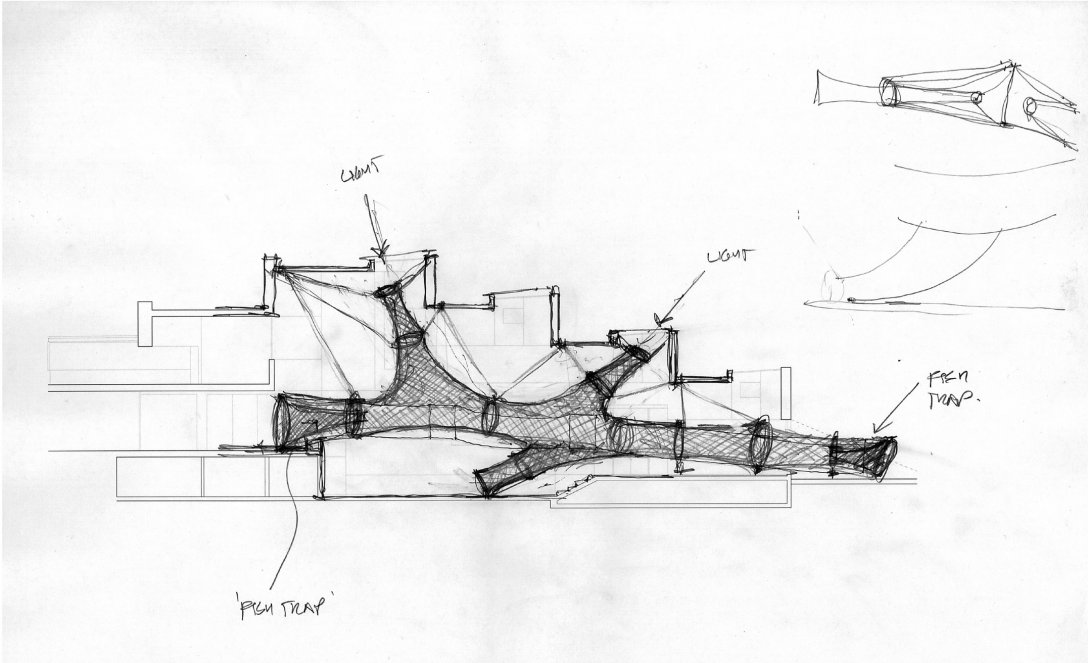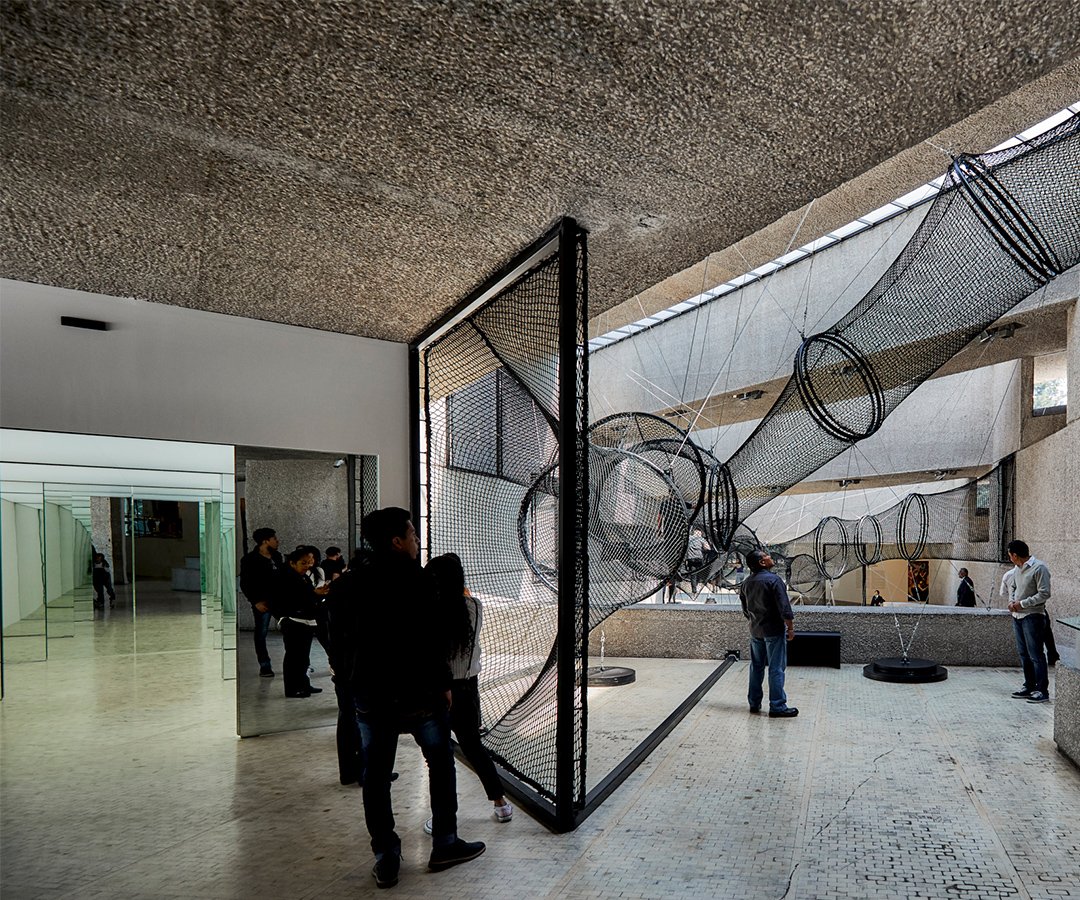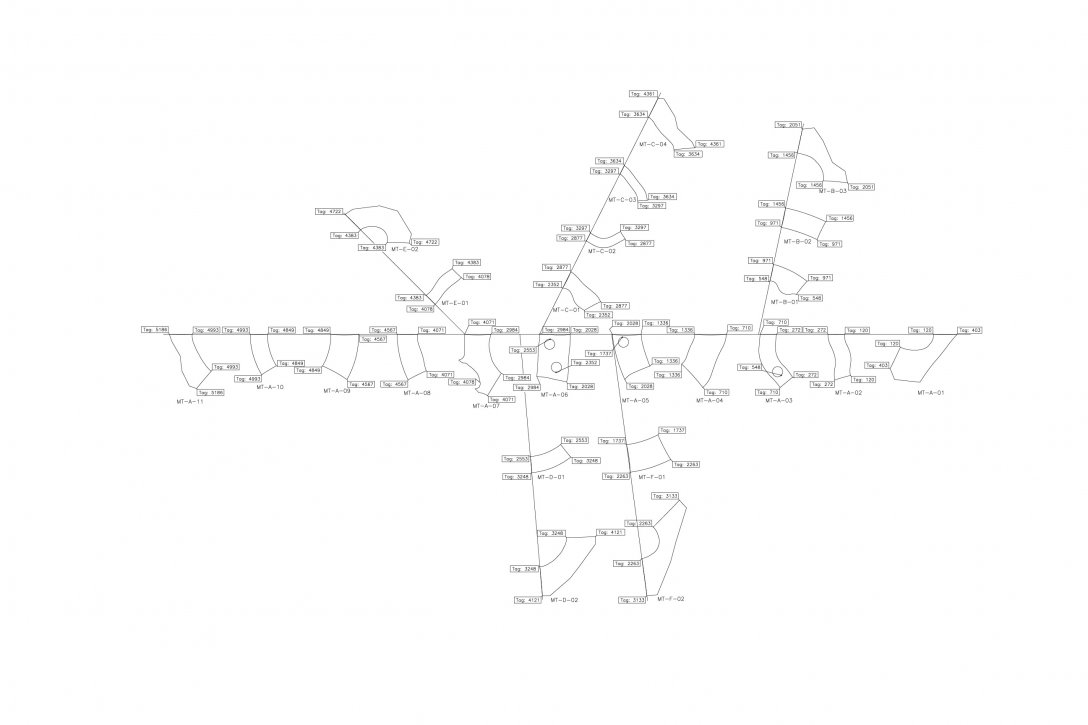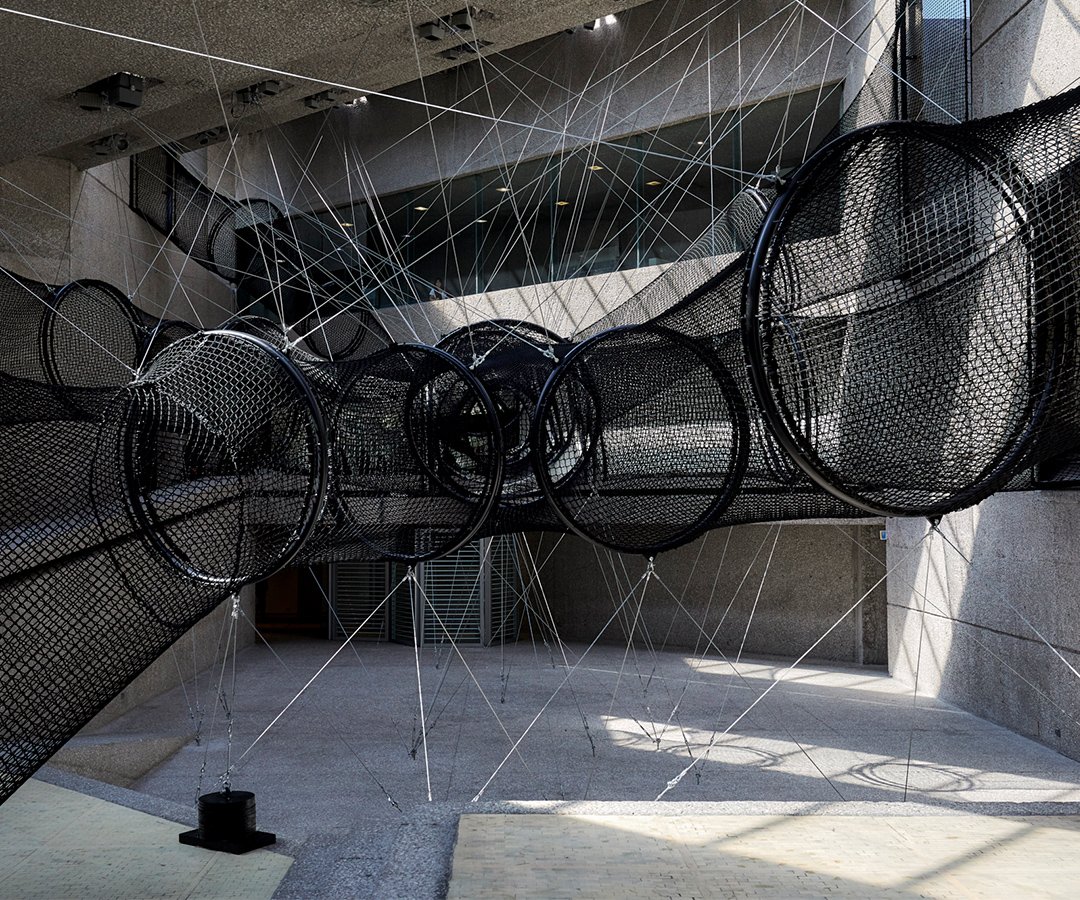Delvendahl Martin Architects
Carsten Höller: Decision Tubes – Mexico City, Mexico
2019 – Completed
Delvendahl Martin has collaborated with Carsten Höller to create a site-specific art work for the artist’s exhibition ‘Sunday’, which recently opened at Museo Tamayo in Mexico City. Höller uses his training as a research agricultural entomologist to create dazzling, mischievous laboratories where we are invited to manipulate our own emotional and physical states. Notorious for introducing the elements of play and the uncanny into the institution, as well as disassociation and seclusion within public space, Höller brings the hallucinogenic into contact with civic life. From curving slides that are several stories tall, to sensory-deprivation polypropylene tanks that host floating visitors. For Sunday, his first exhibition in Latin America, Delvendahl Martin and the artist took the museum’s architecture as a starting point—a bush-hammered concrete building designed in 1981 by Mexican modernist architects Teodoro González de León y Abraham Zabludovsky with a stepped shape nestled in the landscape in reference to pre-Hispanic architecture, and located in one of Mexico City’s principal museum districts—to create the site-specific ‘Decision Tubes’, a delicate suspended fish trap-like structure of net and steel, that allows visitors to walk through the museum’s main atrium space as if they were floating above the ground. The work expands on the ‘Decision Corridors’, first shown in 2015 at his Hayward Gallery exhibition in London: meandering pathways where one is both forced to follow multiple curves and turns, also designed by Delvendahl Martin.
The idea evolved through conversations with Höller and visits to the museum. The aim was to create a lightweight structure, like a large floating organism, with a physical expression in contrast with the robustness of the museum’s architecture. It was therefore important to achieve a certain level of transparency that eventually led to the choice of a knotless polypropylene safety net stretched between steel frames and rings, as the main material. A design team that included a structural engineer and fabricators, spent over a year developing the concept and the technical solutions for the structure, which is suspended from the roof using a series of brackets concealed in the lighting troughs and fixed to the exterior of the building. Ultimately the art work established a symbiotic relationship with the museum: its shape and location were generated using the geometry of building so it is closely related to it, but by creating new connections and providing access to areas never before opened to the public, it has also fundamentally changed the way people experience and move through the spaces.
Project Team
Estefania Alvarez
Photography
Attilio Maranzano: cover page image
Sergio Lopez






